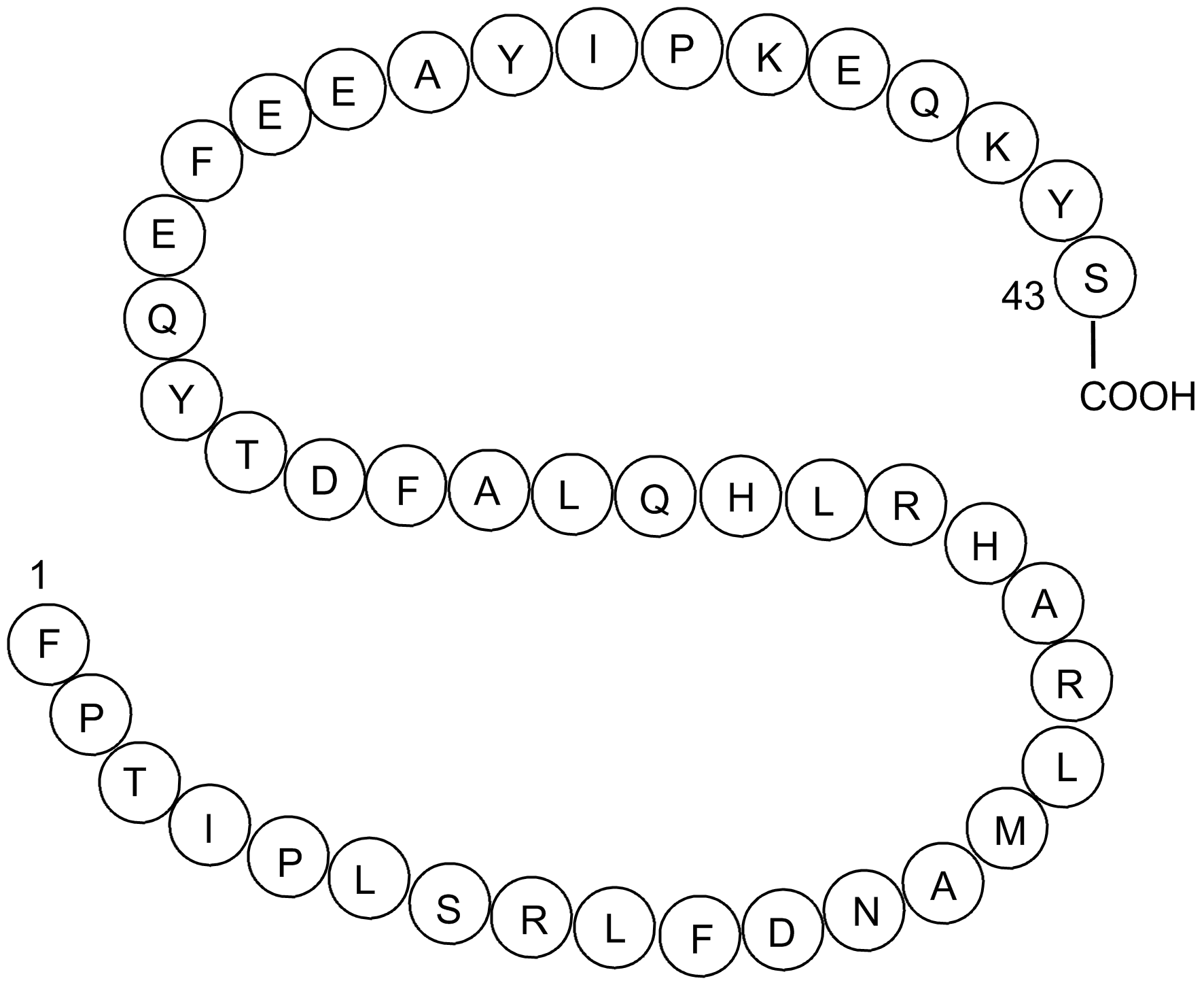Growth Hormone (1-43), human (Synonyms: H2N-Phe-Pro-Thr-Ile-Pro-Leu-Ser-Arg-Leu-Phe-Asp-Asn-Ala-Met-Leu-Arg-Ala-His-Arg-Leu-His-Gln-Leu-Ala-Phe-Asp-Thr-Tyr-Gln-Glu-Phe-Glu-Glu-Ala-Tyr-Ile-Pro-Lys-Glu-Gln-Lys-Tyr-Ser-OH ) |
| Catalog No.GP10024 |
Human Growth Hormone (1-43) peptide
Products are for research use only. Not for human use. We do not sell to patients.

Sample solution is provided at 25 µL, 10mM.
Growth Hormone (1-43), human (C240H358N62O67S1), a peptide with the sequence H2N-FPTIPLSRLFDNAMLRAHRLHQLAFDTYQEFEEAYIPKEQKY
S-OH, MW= 5216.2. Growth hormone (GH or HGH), also known as somatotropin or somatropin, is a peptide hormone that stimulates growth, cell reproduction and regeneration in humans and other animals. It is a type of mitogen which is specific only to certain kinds of cells. Growth hormone is a 191-amino acid, single-chain polypeptide that is synthesized, stored, and secreted by somatotropic cells within the lateral wings of the anterior pituitary gland.Growth hormone is used as a prescription drug in medicine to treat children's growth disorders and adult growth hormone deficiency(1). Effects of growth hormone on the tissues of the body can generally be described as anabolic (building up). Like most other protein hormones, GH acts by interacting with a specific receptor on the surface of cells.Because polypeptide hormones are not fat-soluble, they cannot penetrate cell membranes. Thus, GH exerts some of its effects by binding to receptors on target cells, where it activates the MAPK/ERK pathway(2).Through this mechanism GH directly stimulates division and multiplication of chondrocytes of cartilage.GH also stimulates, through the JAK-STAT signaling pathway,the production of insulin-like growth factor 1 (IGF-1, formerly known as somatomedin C), a hormone homologous to proinsulin(3).The liver is a major target organ of GH for this process and is the principal site of IGF-1 production. IGF-1 has growth-stimulating effects on a wide variety of tissues. Additional IGF-1 is generated within target tissues, making it what appears to be both an endocrine and an autocrine/paracrine hormone. IGF-1 also has stimulatory effects on osteoblast and chondrocyte activity to promote bone growth.

Figure1 the structures of Growth Hormone

Figure 2 Mechanisms of Growth Hormone regulaltion
Ref:
1. Powers M (2005). "Performance-Enhancing Drugs". In Leaver-Dunn D, Houglum J, Harrelson GL. Principles of Pharmacology for Athletic Trainers. Slack Incorporated. pp. 331–332.
2. Binder G, Wittekindt N, Ranke MB (February 2007). "Noonan Syndrome: Genetics and Responsiveness to Growth Hormone Therapy". Horm Res 67 (Supplement 1): 45–49.
3. Actions of Anterior Pituitary Hormones: Physiologic Actions of GH". Medical College of Georgia. 2007.
Average Rating: 5 (Based on Reviews and 30 reference(s) in Google Scholar.)
GLPBIO products are for RESEARCH USE ONLY. Please make sure your review or question is research based.
Required fields are marked with *




















